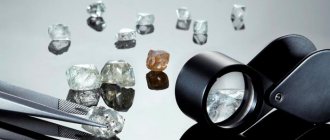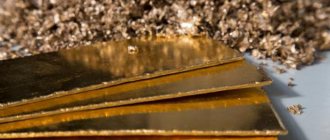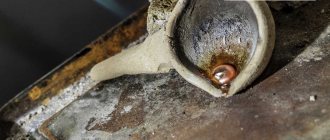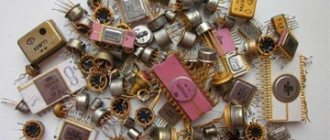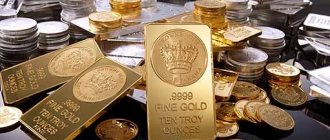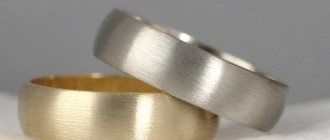Calculation of the mass of precious metals
Instruction No. 94-I of the Central Bank of Russia was issued in order to streamline transactions with precious stones and precious metals carried out by legal entities and individuals on the territory of the state.
Precious metals and stones are weighed using jewelry scales.
Description of jewelry terms
The Central Bank of the Russian Federation, in its instruction No. 94-I (Chapter 1), established the terms used when working with precious stones and precious metals, which you need to know before purchasing jewelry scales. According to this document, the following terminology should be used.
- Precious stones – this definition includes: natural diamonds;
- rubies;
- emeralds;
- alexandrites;
- sapphires;
- natural pearls, both in their natural form and processed.
- silver;
| Ligature weight in grams | Sample percentage equal to or greater | |
| Silver bars | 28000 – 32000 | 99,90 |
| Gold bars | 11000 – 13300 | 99,95 |
| Platinum bars | Less than or equal to 5500 | 99,90 |
| Palladium Ingots | Less than or equal to 3500 | 99,90 |
This also includes ingots produced outside of Russia (USSR) in accordance with the quality standards in force in the producing country.
- Dimensional ingots are called “precious metal ingots”, which are produced and labeled by Russian refining organizations (respectively, Soviet ones before 1992) in strict accordance with the provisions of the current industry and state regulations (standards), which have a mass
- Powders of precious metals - this definition refers to powders of metals belonging to the platinum group, which were manufactured by Russian (Soviet until 1992) refining organizations. These products are a powdery mass, the amount of chemically pure base precious metal in which is 99.99% or more of the mass of the powder (ligature).
This powder must be packaged in plastic jars or glass ampoules, which must be marked with the manufacturer’s markings, the net weight of which is:
| In plastic jars | In ampoules | |
| Palladium | Less than or equal to 7000g | Less than or equal to 25g |
| Platinum | Less than or equal to 7000g | Less than or equal to 50g |
| Rhodium | 25 – 5000 g | 0.1 – 25 g |
- Rolled products – cold-rolled strips of precious metal, produced and labeled by Russian/Soviet organizations performing refining work (after/before 1992). They are supplied as makeweights to batches of precious metals in ingots so that the mass of the batch corresponds to the specified value.
- Granules – silver (refined) in granules. As makeweights supplied to batches of the specified metal in standard ingots for the purposes specified in clause 6.
- Mass in alloy – mass of powder or alloy containing precious metals;
Sample - indicates the percentage of the total mass that is the precious metal in powder or alloy.
To account for precious metals, the unit “troy ounce” is introduced, equal to 31.1035 g.
And to account for precious stones, the “carat” accounting unit was introduced, equal to 0.2 g.
Types of measurements and accounting when accepting and issuing jewelry. Errors, equipment, weight discrepancies.
Quantitative accounting of materials (precious stones and precious metals) is carried out for each item separately. In this case, the following indicators must be reflected (see Table 2).
| Name of values | What is being measured | In what units is quantity measured? |
| Silver in rolled products, granules, measured or standard bars | Weight in ligature (ML) | In grams accurate to 1g |
| Rolled gold or any bullion | Mass of precious metal (chemically pure) | In grams with an accuracy of 0.1g |
| Palladium, platinum, silver and gold coins | Mass of precious metal (chemically pure) | In grams with an accuracy of 0.01g |
| Metals belonging to the platinum group, in powder, rolled products, standard or measured ingots | ML | In grams with an accuracy of 0.1g |
| Precious stones | Weight | Carats. Measurement accuracy up to 0.01 carats |
The mass of precious metals (PM) is determined by weighing them on general-purpose scales that have metrological characteristics not lower than:
- accuracy class 2 - for scales with NPM
- Accuracy class 3 – for scales with NPM 200g.
Permissible errors are regulated by the provisions of the national standard 53228-2008.
The specified GOST R was approved by Rostekhregulirovaniya on December 25, 2008 by order No. 739-st. It is recommended to weigh stones classified as precious stones (GK) on special scales (analytical or carat) with a specified weighing accuracy. If the weight of the DC is less than 1000 carats - 0.01 carats, more - 0.05 carats.
Scales approved for use in weighing recreational facilities must have an NPM corresponding to that specified in the third table of instruction 94-I (Chapter 2).
The mass of the ML and the mass of the DC are determined based on the actual readings of the weighing equipment in units and with the accuracy specified above. However, rounding is prohibited.
The mass of a chemically pure precious metal is calculated by multiplying the ML by the sample of a particular alloy. The result is expressed as a decimal fraction. It contains the actual sample value after the decimal point.
In cases where the cost of precious metals is expressed in dollars per troy ounce, it is necessary to perform a number of operations:
- Convert the mass of the metal to troy ounces by dividing the value in grams by 31.1035. Calculations must be carried out with an accuracy of 0.001 troy ounce with established rules and permitted rounding;
- then the resulting value is multiplied by the metal price in dollars;
- The ruble equivalent is obtained by multiplying the result in dollars by the official exchange rate of a given currency, established by the Central Bank of the Russian Federation on the day the value of the metal is calculated.
The cost of a recreation center is established according to the price list for a recreation center in force in the Russian Federation. This document is compiled in detail. It lists prices in rubles or dollars per carat for each category of recreational products. If necessary, the specified price list can be requested from Gokhran.
1 Comment
kilogramus.ru
The procedure for determining the mass of precious metals and stones. Calculation of cost
Instruction No. 94-I of the Central Bank of Russia was issued in order to streamline transactions with precious stones and precious metals carried out by legal entities and individuals on the territory of the state.
Precious metals and stones are weighed using jewelry scales.
Description of jewelry terms
The Central Bank of the Russian Federation, in its instruction No. 94-I (Chapter 1), established the terms used when working with precious stones and precious metals, which you need to know before purchasing jewelry scales. According to this document, the following terminology should be used.
- Precious stones – this definition includes: natural diamonds;
- rubies;
- emeralds;
- alexandrites;
- sapphires;
- natural pearls, both in their natural form and processed.
- silver;
| Ligature weight in grams | Sample percentage equal to or greater | |
| Silver bars | 28000 – 32000 | 99,90 |
| Gold bars | 11000 – 13300 | 99,95 |
| Platinum bars | Less than or equal to 5500 | 99,90 |
| Palladium Ingots | Less than or equal to 3500 | 99,90 |
This also includes ingots produced outside of Russia (USSR) in accordance with the quality standards in force in the producing country.
- Dimensional ingots are called “precious metal ingots”, which are produced and labeled by Russian refining organizations (respectively, until 1992 - Soviet) in strict accordance with the provisions of current industry and state regulations (standards), which have a mass < or equal to 1000g and contain main precious metal (chemically pure) in volumes constituting 99.99% of the weight of the ingot (ligature). This also includes ingots produced outside of Russia (USSR).
- Powders of precious metals - this definition refers to powders of metals belonging to the platinum group, which were manufactured by Russian (Soviet until 1992) refining organizations. These products are a powdery mass, the amount of chemically pure base precious metal in which is 99.99% or more of the mass of the powder (ligature).
This powder must be packaged in plastic jars or glass ampoules, which must be marked with the manufacturer’s markings, the net weight of which is:
| In plastic jars | In ampoules | |
| Palladium | Less than or equal to 7000g | Less than or equal to 25g |
| Platinum | Less than or equal to 7000g | Less than or equal to 50g |
| Rhodium | 25 – 5000 g | 0.1 – 25 g |
- Rolled products – cold-rolled strips of precious metal, produced and labeled by Russian/Soviet organizations performing refining work (after/before 1992). They are supplied as makeweights to batches of precious metals in ingots so that the mass of the batch corresponds to the specified value.
- Granules – silver (refined) in granules. As makeweights supplied to batches of the specified metal in standard ingots for the purposes specified in clause 6.
- Mass in alloy – mass of powder or alloy containing precious metals;
Sample - indicates the percentage of the total mass that is the precious metal in powder or alloy.
To account for precious metals, the unit “troy ounce” is introduced, equal to 31.1035 g.
And to account for precious stones, the “carat” accounting unit was introduced, equal to 0.2 g.
When choosing scales for forklifts, you need to pay special attention to the technical characteristics of the equipment.
Medical dynamometers are used to measure torque in humans. When you need this equipment, read this article.
Scales, like other technology, are constantly evolving. You can read about the latest developments in this area at https://kilogramus.ru/poleznaya-informaciya/novejshie-razrabotki-v-mire-vesov.html link.
Types of measurements and accounting when accepting and issuing jewelry. Errors, equipment, weight discrepancies.
Quantitative accounting of materials (precious stones and precious metals) is carried out for each item separately. In this case, the following indicators must be reflected (see Table 2).
| Name of values | What is being measured | In what units is quantity measured? |
| Silver in rolled products, granules, measured or standard bars | Weight in ligature (ML) | In grams accurate to 1g |
| Rolled gold or any bullion | Mass of precious metal (chemically pure) | In grams with an accuracy of 0.1g |
| Palladium, platinum, silver and gold coins | Mass of precious metal (chemically pure) | In grams with an accuracy of 0.01g |
| Metals belonging to the platinum group, in powder, rolled products, standard or measured ingots | ML | In grams with an accuracy of 0.1g |
| Precious stones | Weight | Carats. Measurement accuracy up to 0.01 carats |
The mass of precious metals (PM) is determined by weighing them on general-purpose scales that have metrological characteristics not lower than:
- accuracy class 2 – for scales with NPM < 200g;
- Accuracy class 3 – for scales with NPM 200g.
Permissible errors are regulated by the provisions of the national standard 53228-2008.
The specified GOST R was approved by Rostekhregulirovaniya on December 25, 2008 by order No. 739-st. It is recommended to weigh stones classified as precious stones (GK) on special scales (analytical or carat) with a specified weighing accuracy. If the weight of the DC is less than 1000 carats - 0.01 carats, more - 0.05 carats.
Scales approved for use in weighing recreational facilities must have an NPM corresponding to that specified in the third table of instruction 94-I (Chapter 2).
The mass of the ML and the mass of the DC are determined based on the actual readings of the weighing equipment in units and with the accuracy specified above. However, rounding is prohibited.
The mass of a chemically pure precious metal is calculated by multiplying the ML by the sample of a particular alloy. The result is expressed as a decimal fraction. It contains the actual sample value after the decimal point.
In cases where the cost of precious metals is expressed in dollars per troy ounce, it is necessary to perform a number of operations:
- Convert the mass of the metal to troy ounces by dividing the value in grams by 31.1035. Calculations must be carried out with an accuracy of 0.001 troy ounce with established rules and permitted rounding;
- then the resulting value is multiplied by the metal price in dollars;
- The ruble equivalent is obtained by multiplying the result in dollars by the official exchange rate of a given currency, established by the Central Bank of the Russian Federation on the day the value of the metal is calculated.
The cost of a recreation center is established according to the price list for a recreation center in force in the Russian Federation. This document is compiled in detail. It lists prices in rubles or dollars per carat for each category of recreational products. If necessary, the specified price list can be requested from Gokhran.
What is a gold ligature: characteristics, samples
Most jewelry owners don't even know what a gold ligature is. In fact, the appearance and durability of jewelry depends on its characteristics.
Why do you need a ligature and is it possible to do without it?
In the jewelry industry, the alloy for gold is extremely important - by adding various elements to the alloy, you can achieve significant changes in the characteristics of a gold product, such as strength or appearance. It should be taken into account that only pure metals are used as an additional element, without any impurities. This does not mean that gold can only be mixed with one specific element; the combination of several metals is allowed and quite successfully used.
Pure gold is a rather soft and very ductile metal, and such jewelry made from it will be quite difficult to wear without worrying about its safety. This is why a ligature is used - by adding other elements to it, it becomes possible to significantly increase the strength of the product.
What is it?
The amount of pure gold is indicated in the hallmark of the jewelry. There are 4 types of samples: metric, carat, spool and lot. The most popular is metric, consisting of 3 digits: they indicate the amount of gold per 1 kilogram of product mass. For example, fineness 999 means that in one kilogram of the alloy there is only 1 gram of alloy - everything else is pure noble metal. But it is unlikely that you will be able to wear such jewelry successfully, due to the softness of the material.
There are several samples:
- 375. the lowest sample, in which 62.5% is ligature. Products with such a hallmark are notable for their low cost, but are significantly stronger and more durable than more expensive jewelry;
- 583, “Soviet” gold. Today, the manufacture of goods from this alloy is not carried out. The share of occurrence of other metals is 41.7%;
- 585. The most popular hallmark is a stamp containing these numbers, which are found on almost every piece of jewelry. Perfectly combines high performance characteristics and excellent appearance. The ligature accounts for 41.5% of the total mass;
- 750 sample. This product accounts for 75% pure metal. Products made in this way are highly expensive, since the composition also includes precious metals;
- 958 standard is practically not used in jewelry. Bullions are usually obtained from it, which are then used in the banking industry.
How does the ligature depend on the color of the decoration?
Depending on the elements added to the ligature, the shade of the resulting products also differs: White. Appears as a result of mixing the precious metal with palladium, platinum, manganese or nickel. The composition was considered one of the most popular at the beginning of the last century. Yellow. The shade inherent in a natural noble metal. The alloy contains only copper and silver. Red. Red or royal gold is obtained by adding copper to the base metal. Products made using this method are highly durable. The green tint is obtained by adding silver or rubidium. The greater the amount of silver, the lighter the product will be. But the resulting items are quite fragile, despite their stunning appearance. The black product owes its appearance to the presence of rhodium or ruthenium in the alloy. Compounds of chromium and cobalt are used as analogues, after which the surface of the objects is oxidized artificially.
Why is the decoration yellow or white in one test?
The white tint of the product is due to the presence of the following metals: platinum, palladium or silver in the alloy. The most expensive alloy is mixed with platinum - not all consumers can afford such jewelry. Compositions with nickel are more accessible, and they can be identified by their less bright shine, vaguely reminiscent of jewelry silver. But it is worth knowing that products made from this alloy negatively affect the health of the owner, often causing allergies. Adding only 1/10 of platinum often gives the composition shine and a distinctive white color, significantly increasing strength and increasing the material’s resistance to chemical attack. 585 standard contains a little more than half of gold, the rest consists of silver or platinum, which ensures the white color of the product. Impurities of palladium or nickel give a barely noticeable yellowish tint.
To obtain a pronounced white color, the composition is additionally coated with a layer of rhodium, an element belonging to the platinum group of metals, which gives the product high resistance to mechanical stress. The cost of this metal exceeds the cost of gold, and for this reason the value of such jewelry is comparable to the value of objects made of pure precious metal. Also, such decorations are absolutely harmless to health.
The difference between white gold and silver jewelry
Despite the external similarity, there are several differences by which you can find out whether the product is silver or gold
- Try. For silver jewelry it is 925. White gold is found in stores only 585 or 750.
- Gold items are significantly harder than silver items.
- Silver does not shine as brightly as white gold.
A ligature in gold allows you to completely change the properties of the metal, making it possible to obtain real masterpieces. It is thanks to the chemical properties of various alloys that today everyone can find jewelry to suit their taste.
tozoloto.ru
Why are ligature projects needed?
Pure gold is a fairly soft metal. It is so plastic and pliable that you can easily knead it with your hands. This material is not suitable for making jewelry. What is the secret of the craftsmen who make jewelry?
The fact is that there are methods that increase the strength of the gold alloy, otherwise it is called a gold alloy. Making jewelry is a complex and labor-intensive process, so gold ligature is an important part of the process.
By adding different ingredients to the alloy composition, you can get serious changes in the characteristics of the future product, you can significantly increase strength and durability, and it becomes possible to change the appearance. It is important to note that only pure metal is always taken as an element that complements the composition.
Definition of ligature, its composition
The definition of ligature in metallurgy is understandable even to an uneducated person. In fact, this is an elementary additive to a particular alloy, thanks to which the quality indicators of the alloy can be improved.
Ligature in jewelry is an opportunity to change the strength of gold, but not only. Thanks to it, the color of the jewelry changes, and, accordingly, its appearance, which greatly affects the presentability of the product. Not every owner of jewelry is interested in what the actual composition of the alloy of the product is. Typically, it includes the following elements:
- silver;
- copper;
- platinum;
- palladium;
- nickel.
Each type of alloy has its own specific proportions, which must be strictly observed.
Types and properties
The ligature is distinguished by the ingredients included in the alloy. Thus, it can be assumed that there are a large number of its species. It all depends on which component needs to be added. Sometimes the type of ligature indicates the addition of a precious or base metal. It is necessary to clarify that each component is added separately, with a certain order, in a strictly designated proportion.
With the help of various ligature compositions and modern equipment, jewelry craftsmen are able to give gold interesting directions in color and shades:
The alloy weight of gold, for example, depends on the density and quality characteristics of the filler materials.
The pure gold content of an alloy is a value called fineness; the higher the fineness, the more precious metal there is in the composition. It is this that primarily affects the cost of the finished product. The sample is measured according to three world systems: metric, carat and spool. Nevertheless, the ligature plays a very important role in jewelry. It allows the alloy to improve and gives it:
- plasticity, malleability;
- elasticity, hardness;
- color and shades;
- durability, wear resistance.
Using imagination and the possibilities of alloying, jewelry craftsmen create true masterpieces. Some parts of one piece of jewelry are made of different alloys, but with the same purity.
www.bsn-gold.ru
Marking and weight of measured and standard bullion bars of precious metals
Before investing in gold bars, you should carefully study all the information, compare all the pros and cons, and only then make a deposit. In this case, let's start with information about what measured and standard bars of gold and precious metals are available.
Precious metal ingots are ingots (measured and standard) of precious metals, refined in factories to the highest standards, and meeting state standards.
Bullions produced in the European Union comply with international standards established by the London Bullion Market Association (LBMA).
All bars must meet state standards, which you will learn about in this article.
Gold and silver bullion bars
What kind of ingots are called measured?
Ingots
Ingots produced by Russian refineries in accordance with GOST and production standards. The weight of the ingots ranges from 1-1000 grams, the percentage of pure metal is at least 99.9%.
Let's take a closer look at the standards for gold bullion bars and bullion bars containing silver:
GOST R, which corresponds to:
- Gold measured bars – 51572-2000.
- Silver measuring bars – 51584-2001.
According to these GOSTs, gold and silver bars must meet the following parameters:
- The dimensions are established by these GOSTs in accordance with the weight of the ingots; the thickness is not standardized in any way. The rules allow the production of ingots of any size, which are agreed upon between the customer and the manufacturer (but weighing no more than 1000 grams).
- The ingots must have no signs of damage, plaque, cracks, etc.
- All ingots must be marked in accordance with all requirements.
Let's look at the marking of a measuring ingot using an example:
- Ingot weight (nominal) in grams. The inscription (name of the metal), in this case “GOLD” or “SILVER”.
- The mass of precious metal in an ingot in its pure form (fine gold (silver)).
- Sign of the factory where the ingot was produced.
- Serial number (code) of the ingot. For bars smaller than 50 grams, the code may be printed on the reverse side.
What platinum bars are called measured
At its core, the marking of platinum bars is exactly the same as gold and silver, but there are a number of features that distinguish platinum bars from the rest:
- GOST R which corresponds to – 51704-2001;
- There are two samples from which measuring ingots are made. These are 999.8 and 999.5, respectively, the percentage of pure platinum in bars - 99.8% and 99.5%;
- The dimensions are established by these GOSTs in accordance with the weight of the ingots; the thickness is not standardized in any way. The rules allow the production of ingots of any size, which are agreed upon by the customer and the manufacturer (but weighing from 5 to 500 grams);
- For bars less than 100 grams, the code may be printed on the reverse side.
Weight and dimensions of measured gold bars
The weight of a gold bar may vary. Measured ingots can be of two types: cast (SL) and stamped (SS). The letters that follow directly indicate what metal is made of and the weight of the ingot itself. For example, SShZ 500 is a stamped gold ingot weighing 500 grams, or SLSr 100 is a cast silver ingot weighing 100 grams.
The table below shows the weight of the gold bar and the dimensions that correspond to GOST. These indicators are characteristic of both silver and platinum ingots.
GOST is not provided for palladium ingots! And accordingly they are not released.
Standard precious metal bars
Standard Ingots
Standard precious metal bars are bars that are produced and marked by Russian refineries in accordance with all GOSTs. They receive the status “Good Delivery” - “Reliable Delivery”.
Relevant GOSTs:
- Gold standard bars – GOST 28058-89.
- Silver standard bars – GOST 28595-90.
- Platinum standard bars – GOST 3190-2005, GOST R 52245-2004.
- Standard Palladium ingots - GOST 31291-2005, GOST R 52244-2004.
Table of the weight of a standard bar of gold, silver, platinum or palladium, as well as the purity of the metal
Ingot certification
Each bullion must have a personal certificate, which in turn must include the following information:
- GOST ingot;
- Ingot No.;
- Ingot weight;
- Brief information (notations);
- Date of issue;
- Signature of a representative of the technical quality department;
- Signature of a representative of the Russian State Assay Inspectorate.
Each manufacturing plant has its own unique labeling system, which must be indicated in the certificate.
goldinside.ru
Bank operations with bullion and investment coins
Transactions with precious metals in banks are one of the areas of activity under special control by the Bank of Russia. At the same time, both the Bank of Russia itself and commercial banks must be guided by an extensive list of legislative acts and regulations (more than 40). The entire regulatory framework can be grouped into several levels:
- Federal laws and Decrees of the President of the Russian Federation.
- Decrees of the Government of the Russian Federation.
- Regulations, instructions, instructions, letters of the Bank of the Russian Federation.
- Internal regulations of commercial banks.
Operations with precious metals can be carried out by commercial banks that have a universal license from the Bank of the Russian Federation to work with funds in rubles and foreign currency.
In accordance with Federal Law No. 41-FZ “On Precious Metals and Precious Stones” dated March 26, 1998, precious metals include: gold, silver, platinum and platinum group metals (palladium, iridium, rhodium, ruthenium and osmium).
Banks have the right to conduct transactions with refined precious metals (purified from all kinds of impurities), which comply with state standards of the Russian Federation or international quality standards and are in the form of bars and coins made of gold, silver, platinum and palladium. The exception is coins that are the currency of the Russian Federation. In addition, precious metals include:
– powders of platinum group metals (platinum, palladium, rhodium), manufactured by Russian refining organizations, marked by the manufacturer and meeting the state packaging standard (glass flasks or plastic jars); the content of chemically pure base precious metal (99.90% of the alloy mass of the powder);
Alloy mass refers to the actual total mass of the alloy or powder containing the precious metal. The percentage of precious metal in an alloy or powder is called fineness;
– rolled products are cold-rolled strips of precious metals that are added as makeweights to batches of the corresponding precious metals in ingots in order to achieve a given batch weight;
– granules – refined silver in granules, which are added as makeweights to batches of silver in standard bars to achieve a given batch weight.
Most often in banking practice, transactions are carried out with bullion and investment coins.
Precious metal bars are divided into standard and measured. Their characteristics are determined by Russian legislation, regulations of the Bank of Russia and the Government of the Russian Federation, taking into account the International Quality Standards adopted by the London Bullion Market Association (LBMA) and participants of the London Platinum and Palladium Market (LPPM) (as amended by Bank of Russia Directive No. 776-U dated April 11, 2000).
In table 20 indicates the characteristics established for standard ingots in accordance with current Russian quality standards for alloy mass and fineness.
Table 20
Russian quality standards for standard precious metal bars
| Standard Ingots | Ligature mass, g | Sample (not less), % |
| Gold | 11 000–13 300 | 99,95 |
| Silver | 28 000–32 000 | 99,9 |
| Platinum | No more than 5,500 | 99,9 |
| Palladium | No more than 3,500 | 99,9 |
Dimensional ingots are ingots manufactured and marked at Russian refineries and foreign production, weighing 1 kg or less and containing at least 99.99% of the chemically pure precious metal of the alloy mass. On November 25, 1995, Decree of the Government of the Russian Federation No. 1157 “On additional measures to develop the market of precious metals and precious stones in the Russian Federation” was adopted. This decree introduced the characteristics of dimensional ingots presented in table. 21.
Table 21
Characteristics of measuring ingots valid on the territory of the Russian Federation
| Ingots | Ligature mass, g | Sample, % |
| Gold | 1, 5, 10, 20, 50, 100, 250, 500, 1 000 | Highest 99.99 |
| Silver | 50, 100, 250, 500, 1 000 | Highest 99.99 |
| Platinum | 5, 10, 20, 50, 100 | Not lower than 99.95 |
| Palladium | 5, 10, 20, 50, 100 | Not lower than 99.95 |
The quality standards for precious metals adopted by the London Bullion Market Association and members of the London Platinum and Palladium Market are referred to as the London good delivery standard. A refinery that affixes its hallmark to London good delivery bullion must be included in a special list of the LBMA or LPPM. The list includes 55 gold companies from 28 countries; 68 companies from 27 countries for silver; 30 companies from 10 countries for platinum; 23 companies from 9 countries for palladium. In Russia, Novosibirsk, Prioksky, Krasnoyarsk and a number of other refineries have the corresponding status for all four precious metals.
The London good delivery standard contains a number of general requirements for quality standards for precious metal bullion:
- The weight of the bar must be expressed in troy ounces. One troy ounce is equal to 31.1034768 g;
- ingots have mandatory and special marks, which include: serial number, hallmark, manufacturer's mark, year of manufacture, metal type (for platinum and palladium), weight;
- the ingot must have the correct shape, convenient for carrying and storing;
- the ingot should not have pores, depressions or other defects.
Individual characteristics of precious metal bars according to the London good delivery standard are presented in table. 22.
Table 22
London good delivery standard for precious metal bullion
| Type of metal | Ligature weight, troy ounce (tu) or grams (g) | Sample, % |
| Gold | 350–450 tu (weight ratio 0.025 tu) | 99,5 |
| Silver | 500–1,250 tu (weight ratio 0.10 tu) | 99,9 |
| Platinum | 32,150–192,904 tu | 99,95 |
| Palladium | 32,150–192,904 tu | 99,95 |
To carry out transactions with precious metals, banks must equip special premises (on the territory of the cash register) with weighing instruments and scales. Premises and equipment must comply with the State Standard and the requirements of the Bank of Russia, set out in Bank of Russia Instruction No. 94-I “On the procedure for determining the mass of precious metals and precious stones and calculating their value in the Bank of Russia and credit institutions” dated November 30, 2000.
The mass of a chemically pure precious metal is determined by multiplying the mass in the alloy by the alloy sample, presented as a decimal fraction, in which all the digits of the sample value are placed after the decimal point.
For example, when weighing a gold bar, the scale reading is 12,348.43 g. The ligature mass will be determined by rounding the weight of the bar to tenths of a unit and, accordingly, will be 12,348.4 g, after which the mass of chemically pure gold in the bar is determined. It will be equal to 12,347.2 g (12,348.4 x 0.9999 = 12,347.16).
The cost of precious metals is determined in accordance with the Bank of Russia methodology set out in Bank of Russia Instruction No. 94-I dated November 30, 2000 (clause 3).
In order to determine the cost of a precious metal ingot, it is necessary to multiply the price of the corresponding precious metal in Russian rubles per 1 gram by a unit of quantitative accounting (gram with an accuracy of 0.1).
If the terms of the transaction require valuation in US dollars per troy ounce, then to determine the cost of the precious metal in Russian rubles, you must perform the following steps:
– convert the mass of precious metal from grams to troy ounces by dividing the number of grams in the bar by the number 31.1035 with an accuracy of 0.001 troy ounces and observing the rounding rule;
For example, the mass of chemically pure gold in an ingot is 12,459.6 g, which is equal to 400.585 troy ounces (12,459.6: 31.1035 = 400.5851).
– the resulting value of the mass of the precious metal in troy ounces should be multiplied by the price of this precious metal in US dollars. The official world price for gold is determined on the London Stock Exchange in US dollars per troy ounce; prices for gold, silver, platinum and palladium are also determined on world trading floors (New York, Tokyo, etc.). It should be noted that the London fixing for precious metals, set twice a day, is the main reference point when concluding contracts for the supply of precious metals and when determining the contract price;
– in order to convert the price of a precious metal into the ruble equivalent, it is necessary to multiply the price in dollars by the value of the official ruble to dollar exchange rate established by the Bank of Russia on the day of calculating the cost of the precious metal.
The Bank of Russia sets official discount prices for precious metals every working day at 14:00 Moscow time. Prices are calculated based on the fixing for gold, silver, platinum and palladium on the London SPOT spot metal market and are converted into rubles at the official US dollar to Russian ruble exchange rate effective on the day following the day the discount prices were set. Bank of Russia discount prices are used for accounting purposes in credit institutions in the Russian Federation. Discount prices are posted on the official website of the Bank of Russia on the Internet.
One of the forms of precious metals is investment coins, which are primarily a hoarding instrument, the issuer of which is the state Central Bank. It is mandatory to indicate on the coin: the name of the issuer, the type and purity of the precious metal, the weight and denomination of the coin.
The price of a bullion coin is determined by the value of the precious metal from which it is made. As a rule, the value of a bullion coin fully corresponds to the weight of the precious metal indicated on it.
Characteristic features of bullion coins are: normal quality of minting, large circulation and simplicity of design.
In the Russian Federation, investment coins are issued by the Bank of Russia. The investment coins in circulation issued by the Bank of Russia are presented in table. 23.
Table 23
Investment coins of the Bank of Russia in circulation as of 01/01/2019
| Denomination, rubles | Name | Metal/sample | Weight | Year of issue | |
| Total, g | Content of chemically pure metal not less than, g | ||||
| 3 | Sable | Silver 925/1000 | 33,93 | 31,1035 | 1995 |
| 50 | St. George the Victorious | Gold 999/1000 | 7,89 | 7,78 | 2006–2011; 2013–2015; 2018–2019 |
| 3 | St. George the Victorious | Silver 999/1000 | 31,5 | 31,1 | 2009–2011; 2015–2019 |
| 100 | Leopard | Gold 999/1000 | 15,82 | 15,55 | 2011 |
| 3 | Polar bear | Silver 999/1000 | 31,5 | 31,1 | 2012 |
| 50 | Polar bear | Gold 999/1000 | 7,95 | 7,78 | 2012 |
| 100 | Polar bear | Gold 999/1000 | 15,82 | 15,55 | 2012 |
| 3 | Bunny | Silver 999/1000 | 31,5 | 31,1 | 2013 |
| 50 | Bunny | Gold 999/1000 | 7,95 | 7,78 | 2013 |
| 100 | Bunny | Gold 999/1000 | 15,82 | 15,55 | 2013 |
| 3 | FIFA World Cup 2021 in Russia | Silver 999/1000 | 31,5 | 31,1 | 2016 |
| 100 | FIFA World Cup 2021 in Russia | Gold 999/1000 | 15,82 | 15,55 | 2016 |
There are also chervonets (sower) gold coins in circulation, which were issued by the State Bank of the USSR in the period from 1975 to 1982.
When conducting banking operations with precious metals, the Bank of Russia exercises control over the activities of banks in this direction.
The following are subject to verification by the Bank of Russia:
- compliance of transactions carried out by credit institutions with precious metals with the current legislation of the Russian Federation and regulations of the Bank of Russia;
- fulfillment by banks of the ratio of claims and obligations in precious metals in ruble valuation (open position on transactions with precious metals);
- fulfillment by credit institutions of requirements to ensure the safety of transactions with precious metals, the physical safety of bars and coins;
- reliability of reflection of transactions with precious metals in accounting.
Banking operations with precious metals include operations to attract deposits and place precious metals. The list of banking operations and transactions is presented in Federal Law No. 395-1 dated December 2, 1990 “On Banks and Banking Activities”:
- Purchase and sale of precious metals both at your own expense and at the expense of clients (under commission and commission agreements);
- Attracting precious metals into deposits (on demand and for a certain period) from individuals and legal entities;
- Placement of precious metals in one’s own name and at one’s own expense into deposit accounts opened in other banks and provision of loans in precious metals;
- Providing and receiving loans in rubles and foreign currency secured by precious metals;
- Providing services for the storage and transportation of precious metals in the presence of a certified storage facility.
Transactions for the purchase and sale of precious metals are carried out with the delivery of precious metals in physical form or reflected in accounts, and are also divided into cash and forward transactions.
Cash transactions include purchase and sale transactions with immediate delivery, when the delivery date of cash and precious metals (value date) is set within two business days from the date of the transaction. If settlements for the supply of metal and cash are carried out on different value dates, this condition must be specifically agreed upon between the parties at the time of the transaction and reflected in the contract (legally recorded).
Futures transactions include purchase and sale transactions when the settlement period for the transaction is more than two business days from the date of conclusion of the transaction.
In addition to forward transactions for the purchase and sale of precious metals, banks can carry out forward transactions in the form of options, swaps, futures and other transactions in accordance with Russian legislation and international banking practice.
All monetary claims and obligations arising from transactions in precious metals between residents of the Russian Federation must be denominated and paid in the currency of the Russian Federation.
Transactions for the purchase and sale of precious metals are concluded in accordance with the General Agreement on the General Conditions for Conducting Transactions for the Purchase and Sale of Precious Metals on the territory of the Russian Federation, developed by the Bank of Russia and applied in business transactions by banks of the Russian Federation.
Credit organizations are actively engaged in transactions for the purchase and sale of investment and collection (commemorative) coins of both Russian and foreign origin.
First of all, the bank must purchase coins made of precious metals. For this purpose, banks send their applications for the purchase of Russian coins to the territorial offices of the Bank of Russia twice a year. In turn, divisions of the Bank of Russia, based on the application received from the bank, send the specification to it. The document indicates the number of coins allocated to the bank, their value and payment terms. Coins are sold by the Bank of Russia at selling prices, including the face value of the coin, the cost of the precious metals contained in them, the cost of producing coins and overhead costs for their delivery from mints to interregional storage facilities. After payment, the coins are delivered to the bank’s vault independently by its collection service.
Russian banks purchase foreign-made coins, as a rule, with the help of intermediary companies. All actions related to the delivery of coins are carried out by the supplier company. Searching for the required coins, placing an order in foreign mints, delivery, insurance, payment of customs duties and customs brokerage services, payment of VAT, presentation of coins to the assay office, delivery of coins to the bank vault and other specially agreed costs are included in the cost of the coin.
The sale of coins made of precious metals is carried out by banks as a regular cash transaction, with the preparation of appropriate cash documents.
Repurchase (purchase) of coins is a more complex operation for banks, as it requires compliance with the rules and regulations for the purchase and sale of precious metals. First of all, the cash desk of a coin repurchase point (additional office or bank branch) must be equipped with special equipment that makes it possible to determine the alloy grade of the coin, its weight and safety. A bank employee involved in the redemption of coins must undergo special training and have the appropriate certificate. He should also have coin catalogs at his disposal, which contain all the characteristics, detailed descriptions and images of the coins. However, despite significant financial investments in organizing transactions for the purchase and sale of coins made of precious metals, banks are quite actively involved in such operations. Firstly, the bank replenishes coin reserves without additional costs for delivery from the Bank of Russia; secondly, the price of purchasing a coin from a client is lower than the purchase price, which gives the bank additional income; thirdly, the range of coins sold is supported by the purchase of coins from earlier years of issue and having not only an investment, but also a numismatic component in the price.
Bank accounts in precious metals. Banks of the Russian Federation conduct operations with precious metals with the opening of metal accounts. Metal accounts are opened for individuals and legal entities, including banks.
To store precious metals, banks open metal safekeeping accounts. The bank client transfers refined precious metal in bullion for safekeeping. A special feature of metal accounts for safekeeping is the recording of precious metals on them while preserving their individual characteristics: name, quantity of valuables, fineness, manufacturer, serial number of the ingot, etc. Precious metals accepted for safekeeping cannot be placed by the bank on its own behalf and for its own account. account, since they are not borrowed funds from the bank.
The sequence of operations for receiving (issuing) precious metal by a bank is as follows:
1. The client submits an application to the bank to open an account and enters into a corresponding agreement with the bank. The bank opens an account for the client and issues an account opening certificate. The bank begins to accept (issue) precious metals on the basis of the corresponding client’s order no later than three working days from the date of receipt of the order. Moreover, within one day the bank accepts (issues) precious metals in an amount of no more than 5 tons.
2. Precious metals are accepted for safekeeping in the bank’s vault according to an acceptance certificate, which is signed on the one hand by the financially responsible employee of the bank, on the other - by the client or his representative acting on the basis of a power of attorney. In this case, precious metals are accepted (issued) in one batch. Ingots undergo continuous visual inspection, they are counted, each ingot is weighed and the obtained data is compared with the data of accompanying documents and state industry standards in force in the Russian Federation or international quality standards. Upon completion of the acceptance (issuance) of precious metals, one copy of the acceptance and transfer certificate remains in the bank, and the second is transferred to the client.
3. Based on the acceptance and transfer certificate for precious metals, the bank credits (writes off) precious metals to the metal account for safekeeping, about which the bank client receives the corresponding document - an extract from the personal account no later than the next business day after the transaction on the account.
Metal custody accounts are also used to transfer precious metals from one client’s account to another client’s account opened with a bank. In this case, the owner of the account to which the precious metal is transferred must confirm in writing his consent to the crediting of precious metals to his account by transfer of precious metals from the account of another client. The client from whose account precious metals are written off submits a corresponding transfer order to the bank.
The bank is obliged to ensure the safety of precious metals transferred to it for safekeeping, as well as to ensure the confidentiality of information about the client’s precious metals and transactions on metal safekeeping accounts.
The closure of a metal custody account is carried out at the request of the client or by decision of the bank. In the first case, the issuance of precious metals from the client’s account is carried out within three working days after receiving his application.
In the second case, the period for issuing precious metals is 10 business days from the date the client’s bank receives written notification of its intention to close the account.
If the client fails to fulfill his obligation to receive precious metals from the bank's vault when closing the metal account for safekeeping (termination of the account agreement), the bank has the right, after written notification to the client, to sell the precious metals in its custody at the price of purchase of precious metals by the Bank of Russia on the day of the transaction ( Part 2, Article 899 of the Civil Code of the Russian Federation). Upon completion of the transaction, the bank reimburses its expenses for the sale of the client’s precious metals, and transfers the remaining amount of proceeds from the sale of metals to the client’s account.
